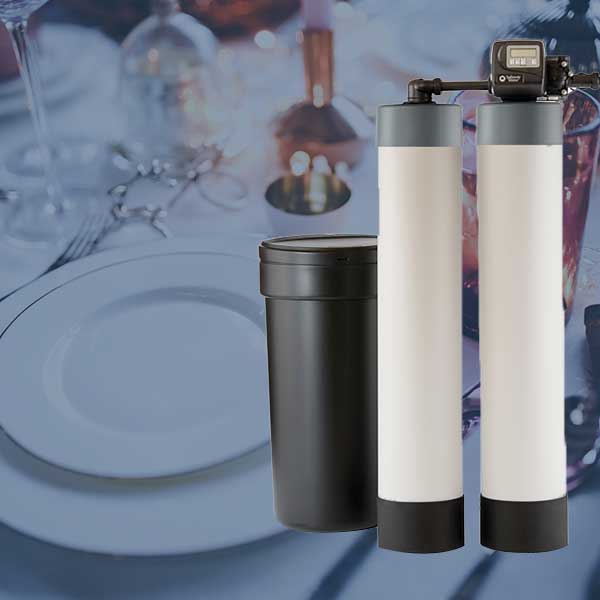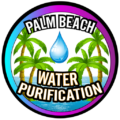Dual Alternating Water Conditioning System
Remove Hardness From Your Water With The Dual Alternating Water Conditioning Systems
Ideal for restaurants, hospitals, manufacturing facilities, estate homes and anywhere soft water is needed on a continuous basis without interruption.

Dual Alternating Water Conditioning Systems Features & benefits
- Systems provide soft water without interruption, 24 / 7.
- One tank is operational; the second tank is on stand-by.
- Greater efficiency because the entire resin bed is utilized, before the stand-by tank goes into operation.
- Highly advanced metered control valve.
- Requires less salt and less water!
- Automatic operation.
- Less maintenance.
- Ideal for residential and commercial use.
- Light gray tanks
- Decorative tank collars are included.
- Top quality iron exchange resin.
- Ten year limited warrant
BENEFITS OF A WATER SOFTENER
How Dual Alternating Water Softeners Work
The key to the dual alternating system is the fact one tank is on stand-by, when the second tank is operational. This means when the operating tank reaches its capacity and the resin must be cleaned, the stand-by tank goes into operation and the flow of soft, conditioned water continues without interruption. Furthermore, the system can be programmed to go into regeneration immediately or the process can be delayed. Dual alternating systems are ideal anywhere soft water is desired or required, 24 / 7.
Major components
Major components of our Dual alternating water softeners include our Signature Series metered control valve, designed to provide greater efficiency, by-pass valve to isolate the unit if necessary, pipe fittings, two pressure tanks, brine tank to contain the softener salt, ion exchange resin, gravel under bedding to provide even flow distribution, riser tube with bottom distributor and water softener salt, used to strip hardness minerals from the resin beads.
How water dual alternating water softeners work
The process whereby hardness minerals are removed from your water is described below:
- These systems have two resin tanks and one control valve. When tank #1 is operational, tank #2 is in standby.
- Water flows through the resin bed in tank #1.
- As water flows through the ion exchange resin, hardness minerals (Calcium & Magnesium) are attracted to the resin and are removed from the water.
- Eventually, the resin reaches its capacity and the resin must be cleaned. (This process is called “regeneration”.)
- The control valve initiates the “cleaning process”, based on gallons used (not time).
- Once tank #1 goes into regeneration, the valve switches the flow to tank #2.
- During the cleaning process, brine water flows through the resin in tank #1 and the hardness minerals become attached to the sodium in the brine water.
- After a period of time, the resin is rinsed so no salt gets into your water.
- When the first tank goes into regeneration, the second tank goes on line and become operational.
Cycles
As water flows through the resin bed, hardness minerals are removed by the ion exchange resin. Eventually, however, the resin reaches its capacity and must be cleaned. This process is called, “regeneration”.
The dual alternating valve is metered, which it calculates when this cleaning process must occur.
This cleaning process is described as follows:
- This is an upward flow to remove any particles and clean the resin.
- Brine draw / rinse. This important step is when brine water flows through the resin bed to remove the hardness minerals. During this cycle, hardness minerals become unattached from the resin and are attracted to the water softener resin.
- 2nd During this up-flow cycle, salt is rinsed off the ion exchange resin.
- An additional cycle to rinse salt off the resin in a down-flow direction.
